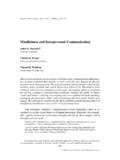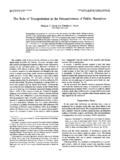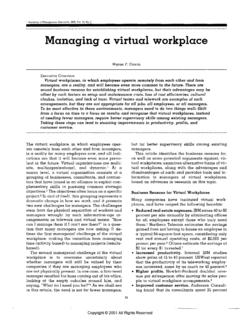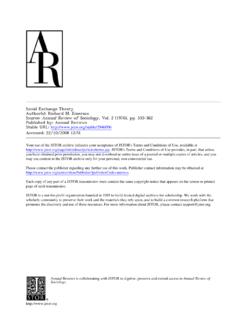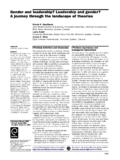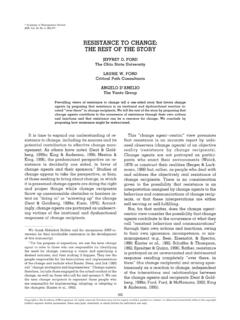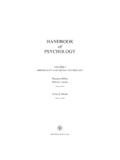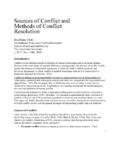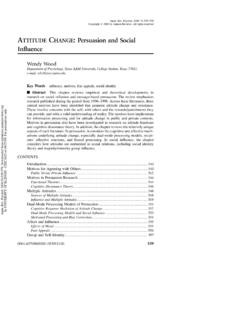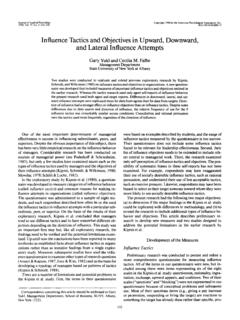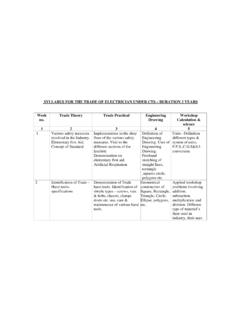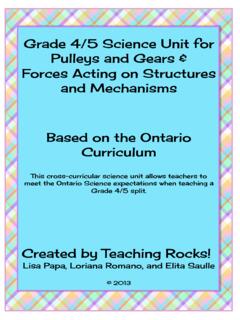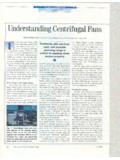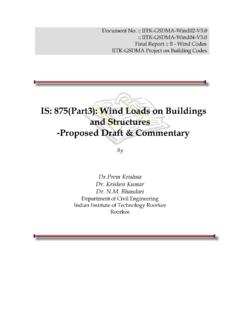Transcription of The Bases of Social Power - Communication Cache
1 20 The Bases of Social Power JOHN R. P. FRENCH, JR., AND BERTRAM RAVEN The processes of Power are pervasive, complex, and often disguised in our society. Accordingly one finds in political science, in sociology, and in Social psychology a variety of distinctions among different types of Social Power or among qualitatively different processes of Social influence (1, 7, 14, 20, 23, 29, 30, 38, 40). Our main purpose is to identify the major types of Power and to define them systematically so that we may compare them according to the changes which they produce and the other effects which accompany the use of Power . The phenomena of Power and influence involve a dyadic relation between two agents which may be viewed from two points of view: (o) What determines the behavior of the agent who exerts Power ?
2 (h) What determines the reactions of the recipient of this behavior? We take this second point of view and formulate our theory in terms of the life space of P, the person upon whom the Power is exerted. In this way we hope to define basic concepts of Power which will be adequate to explain many of the phenomena of Social influence, including some which have been described in other less genotypic terms. Recent empirical work, especially on small groups, has demonstrated the necessity of distinguishing different types of Power in order to account for the different effects found In studies of Social influence. Yet there is no doubt that more empirical knowledge will be needed to make final decisions concerning the necessary differentiations, but this knowledge will be obtained only by research based on some preliminary theoretical distinctions.
3 We present such preliminary concepts and some of the hypotheses they suggest. From Studies in Social Power . D. Cartwright (Ed.), Ann Arbor, Mich.: Institute for Social Itcsearch, 1959. Reprinted by permission of the authors and the Institute for Social Research. 259 260 Power and Influence in Groups Power , INFLUENCE AND CHANGE PSYCHOLOGICAL CHANGE Since we shall define Power in terms of influ-ence, and influence in terms of psychological change, we begin with a discussion of change. We want to define change at a level of generality which includes changes in behavior, opinions, attitudes, goals, needs, values, and all other aspects of the person's psychological field.
4 We shall use the word "system" to refer to any such part of the life space.' Following Lewin (26, 305) the state of a system at tin>e 1 will be denoted si (a). Psychological change is defined as any al-teration of the state of some system a over time. The amount of change is measured by the size of the difference between the states of the system a at time 1 and at time 2: ch (a) = S2 (a) ~ si (a). Change in any psychological system may be conceptualized in terms of psychological forces. But it is important to note that the change must be coordinated to the resultant force of all the forces operating at the moment. Change in an opinion, for example, may be' determined jointly by a driving force induced by another person, a restraining force cor-responding to anchorage in a group opinion, and an own force stemming from the person's needs.
5 Social INFLUENCE Our theory of Social influence and Power is limited to influence on the person, P, produced by a Social agent, O, where O can be either another person, a role, a norm, a group, or a part of a group. We do not consider Social influence exerted on a group. The influence of O on system a in the life space of P is defined as the resultant force on system a which has its source in an act of O. This resultant force induced by O consists of two components: a force to change the system in the direction induced by O and an opposing resistance set up by the same act of O. By this definition the influence of O does 1 The word "system" is here used to refer to a whole or to a part of the whole.
6 Not include P's own forces nor the forces in-duced by other Social agents. Accordingly the "influence" of O must be clearly distinguished from O's "control" of P. O may be able to induce strong forces on P to carry out an activ-ity ( , O exerts strong influence on P); but if the opposing forces induced by another person or by P's own needs are stronger, then P will locomote in an opposite direction ( , O does not have control over P). Thus psychological change in P can be taken as an operational definition of the Social influence of O on P only when the effects of other forces have been eliminated. It is assumed that any system is interdepen-dent with other parts of the life space so that a change in one may produce changes in others.
7 However, this theory focuses on the primary changes in a system which are produced di-rectly by Social influence; it is less concerned with secondary changes which are indirectly effected in the other systems or with primary changes produced by nonsocial influences. Commonly Social influence takes place through an intentional act on the part of O. However, we do not want to limit our defini-tion of "act" to such conscious behavior. In-deed, influence might result from the passive presence of O, with no evidence of speech or overt movement. A policeman's standing on a corner may be considered an act of an agent for the speeding motorist. Such acts of the induc-ing agent will vary in strength, for O may not always utilize all of his Power .
8 The policeman, for example, may merely stand and watch or act more strongly by blowing his whistle at the motorist. The influence exerted by an act need not be in the direction intended by O. The direction of the resultant force on P will depend on the relative magnitude of the induced force set up by the act of O and the resisting force in the opposite direction which is generated by that same act. In cases where O intends to influ-ence P in a given direction, a resultant force in the same direction may be termed positive in-fluence whereas a resultant force in the oppo-site direction may be termed negative influ-ence. If O produces the intended change, he has exerted positive control; but if he produces a change in the opposite direction, as for exam-ple in the negativism of young children or in the phenomena of negative reference groups, he has exerted negative control.
9 The Bases of Social Power 261 Social Power The strength of Power of O/P in some sys-tem a is defined as the maximum potential ability of O to influence P in a. By this definition influence is kinetic Power , just as Power is potential influence. It is assumed that O is capable of various acts which, because of some more or less enduring relation to F, are able to exert influence on P.^ O's Power is measured by his maximum possi-ble influence, though he may often choose to exert less than his full Power . An equivalent definition of Power may be stated in terms of the resultant of two forces set up by the act of O: one in the direction of O's influence attempt and another resisting force in the opposite direction.
10 Power is the maximum resultant of these two forces: powerofO/P(a) = ( ,.- /-) -where the source of both forces is an act of O. Thus the Power of O with respect to system a of P is equal to the maximum resultant force of two forces set up by any possible act of O: (a) the force which O can set up on the system a to change in the direction x, (b) the resisting force 3 in the opposite direction. Whenever the first component force is greater than the second, positive Power exists; but if the second component force is greater than the first, then O has negative Power over P. It is necessary to define Power with respect 2 The concept of Power has the conceptual prop-erty of potentiality, but it seems useful to restrict this potential influence to more or less enduring Power relations between O and P by excluding from the definition of Power those cases where the potential influence is so momentary or so changing that it cannot be predicted from the existing rela-tionship.
